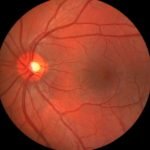Importance of Testing Female Adolescents for Iron Deficiency and Anemia
Two new studies support testing for iron deficiency in female adolescents, even if routine blood work doesn’t show frank anemia.1,2 Anemia is more common in females due to monthly menstrual blood loss. Because of this, routine blood screening often includes measurements that screen for anemia, beginning during teenage years. However, many women may be experiencing the symptoms commonly associated with anemia, such as fatigue, cognitive sluggishness, shortness of breath, and muscle weakness with an initial blood screen which does not show frank anemia. This could be due to iron deficiency at a level which is not yet considered pathological.
Risk Factors for Iron Deficiency
Researchers have looked at more than 6,000 cases of women 12-49 years old (National Health and Nutrition Examination Survey data) between 2003 -2010 who all had blood testing for iron deficiency as well as hemoglobin testing to identify anemia (CBC). The study found that 9 percent of females 12-21 had iron deficiency without anemia. Potential risk factors for iron deficiency include, race, age at which menses began, poverty status, food security, tobacco use, obesity status, and physical activity. The strongest risk factor found in this study specifically was the age at which menses began. Iron deficiency without anemia was significantly higher in younger women who had been having a period for more than 3 years.
Problematic Issues Related to Iron Deficiency
Iron deficiency has been correlated with lower academic performance, attention difficulties (ADD), and restless leg syndrome in children and adolescents. And women with low iron levels are at risk of negative effects on fetal development during pregnancy. Iron deficiency without frank anemia can be thought of like a gas level in a car. Just because the car is still running, doesn’t mean that it isn’t low on gas – when the red light goes on, it means that there is a danger of running out of gas; the appropriate time to get gas was probably miles previously.
Testing for Iron Deficiency is More Costly, Though Necessary to Establish a Baseline for Anemia
Testing for iron deficiency is a bit more costly, but may be a good idea in younger women who are in their first years of menses, especially if they are showing symptoms of anemia. By establishing a baseline, future anemia may be more easily prevented, as well as iron status supplemented to appropriate levels if necessary.
Sources
Sekhar DL, Murray-kolb LE, Kunselman AR, Weisman CS, Paul IM. Association between menarche and iron deficiency in non-anemic young women. PLoS ONE. 2017;12(5):e0177183.
Sekhar DL, Murray-kolb LE, Schaefer EW, Paul IM. Risk-Based Questionnaires Fail to Detect Adolescent Iron Deficiency and Anemia. J Pediatr. 2017;
Image Copyright: <a href=’https://www.123rf.com/profile_bds’>bds / 123RF Stock Photo</a>
 Node Smith, associate editor for NDNR, is a fifth year naturopathic medical student at NUNM, where he has been instrumental in maintaining a firm connection to the philosophy and heritage of naturopathic medicine among the next generation of docs. He helped found the first multi-generational experiential retreat, which brings elders, alumni, and students together for a weekend camp out where naturopathic medicine and medical philosophy are experienced in nature. Three years ago he helped found the non-profit, Association for Naturopathic ReVitalization (ANR), for which he serves as the board chairman. ANR has a mission to inspire health practitioners to embody the naturopathic principles through experiential education. Node also has a firm belief that the next era of naturopathic medicine will see a resurgence of in-patient facilities which use fasting, earthing, hydrotherapy and homeopathy to bring people back from chronic diseases of modern living; he is involved in numerous conversations and projects to bring about this vision.
Node Smith, associate editor for NDNR, is a fifth year naturopathic medical student at NUNM, where he has been instrumental in maintaining a firm connection to the philosophy and heritage of naturopathic medicine among the next generation of docs. He helped found the first multi-generational experiential retreat, which brings elders, alumni, and students together for a weekend camp out where naturopathic medicine and medical philosophy are experienced in nature. Three years ago he helped found the non-profit, Association for Naturopathic ReVitalization (ANR), for which he serves as the board chairman. ANR has a mission to inspire health practitioners to embody the naturopathic principles through experiential education. Node also has a firm belief that the next era of naturopathic medicine will see a resurgence of in-patient facilities which use fasting, earthing, hydrotherapy and homeopathy to bring people back from chronic diseases of modern living; he is involved in numerous conversations and projects to bring about this vision.










